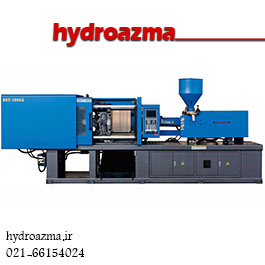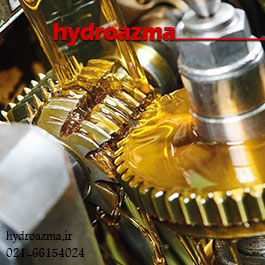Fluid flow in hydraulic systems
Fluid flow in hydraulic systems
Parameters and principles affecting fluid flow in hydraulic systems
- Weight – density – specific gravity
- Pressure – height of fluid column – force
- Pressure equal to the height of the fluid column
- stickiness
- bulk modulus (B)
- Conservation of energy
- Bernoulli’s equation
- Continuity equation
- Slow and confused flow
Hydraulic cylinder speed control
- Speed control with input current control
- Speed control with output current control
- Speed control by sending part of the flow to the tank
Operators
Actuators are used in the hydraulic system to convert fluid power under pressure into mechanical power. The amount of power generated depends on the flow rate and pressure drop of the operator and its overall efficiency. The biggest advantage of the hydraulic system compared to the mechanical systems is the flexibility of the power components (hoses and pipes) and the direct conversion of fluid power into linear and rotational movements.
Hydraulic actuators are divided into the following three basic types:
Linear operators (cylinder)
Rotary actuators with continuous rotation (hydraulic motors)
Rotational operators with limited rotation domain (quasi-rotational)
Hydraulic linear actuators
It is used in hydraulic cylinders to apply linear force and move the load or keep it in the desired position. The following factors are related to the selection of hydraulic cylinders.
Application of cylinder
Interior building
Required force
working temperature
load status
Number of cycles per unit of time
Installation Method
Accelerating and decelerating force
Piston rod buckling
In the hydraulic cylinder, the piston rod is under pressure like a column. Therefore, in order to prevent buckling, the rod must have a sufficient diameter. Euler’s theory is used to calculate the appropriate diameter of the piston rod in relation to buckling. In applying this theory, it is necessary to consider the length of the piston rod and the method of connecting it to the load. Manufacturers of cylinders in their catalogs provide the necessary guidelines in this regard by specifying the diameter of the piston rod at the end of each compression stroke (for compression forces).
Maximum cylinder speeds
The maximum speed of the piston rod is limited by the following two factors:
The amount of current entering and exiting the cylinder
The resistance of the cylinder against shock loads caused by the stop of the piston
working temperature
Due to the prevention of rapid deterioration of elastomer seals, the maximum working temperature should not exceed 80 degrees Celsius. In some cases, it is necessary to install a heat shield to prevent the penetration of external heat into the cylinder. By using metal piston rings instead of elastomeric seals, the permissible working temperature range can be increased. Deterioration of mineral oils starts at temperatures above 50 degrees Celsius. This problem also exists at low temperatures.
Oil storage tank
The proper design of the tank is one of the effective factors in increasing the efficiency and life of the hydraulic system parts. The tank is a place where sludge, water and metal particles are deposited and air bubbles are allowed to separate from the oil by escaping to the surface. Therefore, the tank is not only a space for holding hydraulic fluid, but it is also the main place to provide its required conditions.
The pump suction line filter should be placed below the oil level and 1/2 to 3/4 inches above the oil level.
In order to prevent oil foaming, the main return line should be installed below the oil level (double the return line above the tank floor) and in an area opposite the pump suction line.
The leakage collection lines have zero pressure and must be separated from the main return line and discharged above the oil level. As a result, the non-dissolved air is separated from the oil and the occurrence of air congestion in the vital lines is prevented.
Lines connected to the atmosphere, which contain large amounts of air, should be discharged above the oil level and above the oil level and inside the sloping surface of 5 to 10 degrees.
The breathing duct installed on the surface of the tank should be equipped with a strainer.
The oil supply pipe of the tank should be equipped with a strainer.
Glass index
The outlet is at the lowest point.
Interior wall painting
waveguide plates
Hydraulic fluids
Mineral oil has been available since the beginning of the 20th century, but the use of additives to improve the chemical and physical properties of hydraulic oils began in the 1940s. These oils are highly flammable and there is a serious possibility of danger when used at high temperatures.
Hydraulic fluid properties
Relative density or specific weight (about 0.9)
stickiness
Viscosity index
Viscosity-pressure profile
Cutting stability
Characteristics of creating foam
drop point
Compressibility
thermal expansion
Lubrication
Types of hydraulic fluids
Mineral oil
A milky solution of oil in water
A milky solution of water in oil
Glycol water fluids
Phosphate Ester
All types of conducting pipes and fittings
Rigid steel pipes
Semi-rigid pipes
Plastic pipes
Flexible hoses
Strainers and filters
The worst enemy of advanced and precise hydraulic parts is contaminated fluid.
The effective factors in creating pollution are:
1- Creating pollution during the construction, maintenance and assembly of components due to the entry of metal particles, pipe thread chips, pipe cap particles, sealing material particles, welding particles and particles inside the components.
2- Creating pollution during the operation of the device due to water entering the hydraulic tank, gas production in the tank, mass formation in the pipes, particles of worn seals, metal particles of worn parts, oxidation of oil.
3- Entry of pollution from outside the hydraulic system.
The filters
In comparison with the filter, the strainer is used to separate larger particles and creates less resistance to the flow of current. Metal plates with holes of the maximum size of 0.0059 inches (about 150 microns) are used in the inner construction of the filter.
Filters
A filter is a device that is capable of separating microscopic particles that are not soluble in fluid. Studies have shown that particles as small as 1 micron can have a destructive effect on the hydraulic system.
The filters that can be installed on the output line of the pump and the types that can be installed on the return line to the tank have many differences.
It is suitable to use 25 to 35 micron filters in the return line. It is necessary to use 10 micron types in very sensitive systems that use cedar valves.



Leave a Reply